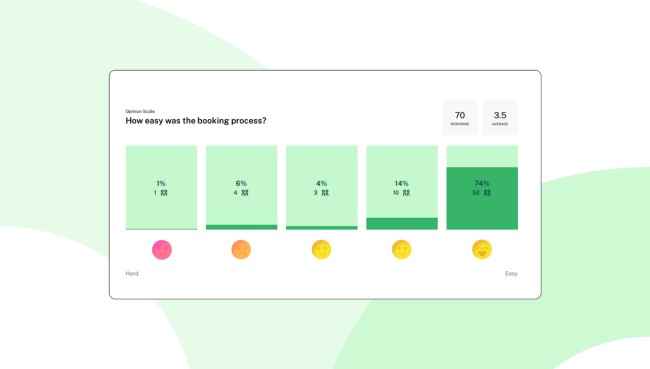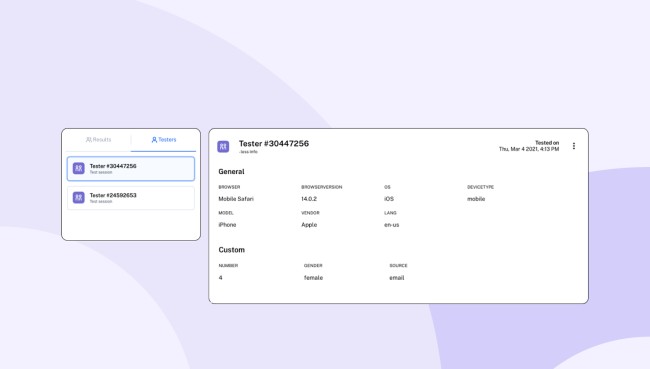“How well we communicate is determined not by how well we say things, but how well we are understood.” Andrew Grove, former CEO at Intel Corp
Isn’t this what a UX designer’s job is all about? To do all that’s necessary to make the communication between the product and its users the best possible?
What’s the point of having a brilliantly designed product or website that isn’t optimized for a user’s experience – it’s like making a beautiful cake and eating it alone.
Ok, maybe not that harsh, but it’s definitely like making your divine product just for yourself because you don’t know how it serves others and do they even like it.
That’s why it’s very important to have users in mind in the design phase. And, of course, to check with actual users is it any good. Enter usability testing. A very important step in your process of making that divine cake. Did I say cake?
Of course, all that being said, this can be used in all kinds of businesses. For example – you can actually test a user’s experience by eating cake samples if you run a bakery and are adding new products to your menu. Here, however, we’ll concentrate in the digital world, improving digital products.
What is tree testing?
When you start planning your UX testing you’ll need to make good UX research and decide:
– what methods will you use?
To make sure you’re getting the best results from any of these tests, you’ll need to do thorough UX research. It’s better to take some time for planning and research and to be prepared for the process than to do it partially.
What UX research is doing for you is saving you time and money and getting the best from any test method you include in your website testing.
One of the methods UX designers are using is tree testing. The name comes from the tree looking design of the website’s hierarchy. When you set all categories and steps to follow on the website, it can resemble a tree.
There’s the answer to our question – it’s a testing method which gets you an answer about hierarchy on the website, or how complicated or simple it is for a user to find information he/she needs on your website.
This method is usually used in cases of website improvements or in the end phase of product design. Actually, it’s recommended to test regularly, to keep in track with your users. Information you’ll get from it is multi useful and will improve navigation of your website in many ways.
Tree testing is often mistaken for another UX method called : card sorting. What is the difference and what is similar in these methods?

Tree testing and card sorting
A better-known usability method is card sorting. As its name says it actually involves sorting of the cards. Participants are asked to sort or group given cards with information into categories, in their own opinion.
With tree testing we’re doing it in reverse – participants are searching through categories and guessing where they’ll find wanted information. It’s often called – reverse card sorting.
We can say these methods are complementary, and usually is best to conduct card sorting before tree testing. With card sorting, you can get an idea of how your users think and guided by that you can make your website’s hierarchy. Afterwards, you’ll test it through tree testing.
What are the benefits of tree testing
If you are planning to enhance your website usability or you are just starting a career in UX design, you should definitely consider doing this testing method. Tree testing is one of the simplest yet most effective methods you can use. And it doesn’t cost much.
There are many benefits your product can get from tree testing. Here are some of them:
1. Can be done remotely
One of the best things about this method is that it can be done remotely and actually is very simple. It’ll save you money and time – that slightly forgotten value that we all take for granted. By this I mean – you’ll have very useful information in a short period of time.
2. More intuitive navigation menus
Using this testing method and combining it with card sorting, if possible, you’ll get all the information you need for your site’s navigation menu to be more user-friendly, or intuitive. You’ll have information on how your users think and what they love when going through your site. And also, what they don’t love.
3. Can be done in any stage of design
Maybe one of the best benefits of tree testing is that it can be conducted at any time. You can use it in the planning stage, but also in any other, and the more you use it the better your product becomes. The fact it’s not an expensive method also benefits you and allows you to use it often.
4. Helps you verify the site’s organization
Tree testing can help you to find what part of your site’s organization needs restructuring but also can help you verify the factors that are good about it. And what’s important- you’ll get the information from real-life testing, from your users.
Because, as much as you took care of getting your users the best and easiest way to find what they need on your site, people are very different and what’s logical for one person doesn’t make any sense for another.
Of course, you can’t make everybody on the planet happy, but you can try to find some compromises.
5. Gives you direct and fast results
After applying tree testing you can get very specific results and what’s more important you can act upon them quickly. Once you find an error or a glitch in the site’s navigation, you can change it immediately and upgrade the user’s experience of your site.
Also, it shows just how much you care for users and that you are doing prompt changes just to make their life easier.

How does it work
We already said that it’s one of the simplest methods you can use. But how is it actually done?
It consists of simple tasks you give to your participants. Before starting, of course, you’ll have to find participants, and that’s not that hard considering it can be done remotely. Also, it gives you a wider reach, as you can consider participants all over the globe.
- Give participants prepared tasks
- Tasks should consider finding some item or information on your site
- Participants indicate where they think is the best or the most logical way to go to find it
And voila!
That’s it. I said it was simple, didn’t I? But don’t be fooled by its simplicity. It can do a ton to improve your site.
For conducting tree testing you can use various tools available on the web. But also, it can be done without them. It’s up to you and what you prefer. It’s a very simple method and the results will be useful, whatever way you choose.
Now, after you’ve done testing all the categories you wanted, you just need to analyze the results and apply changes.
Why you should definitely use this method
With getting started in any user-friendly service, one of the biggest issues you’ll find will be the fact that people are not the same. What seems obvious to you, your friend wouldn’t see it if it was right in front of him.
Same thing should be considered in making a useful and productive website. It’s not considered an issue at all sometimes, as designers often forget that not every user in the world has the same sense of logic or is as intuitive as them.
Let’s not forget designers are also humans – they can make some simple mistakes, causing problems for your users.
But, luckily, there’s a way to fix it. And to find what needs to be fixed. By doing tree testing regularly, or maybe before any iteration, you can make your product, and your website a place where people come often and are happy with what they can find there. You’ll get good reviews, and recommendations and your business will expand.
If you are still thinking about whether you should try it or not, just ask yourself – when was the last time you searched through some site where you had to spend a lot of time digging to get what you needed?
